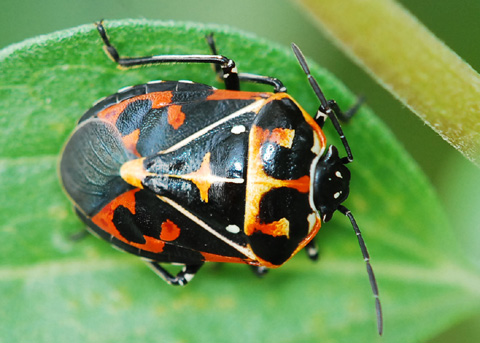|
|
Harlequin bug Murgantia histrionica Hemiptera: Pentatomidae Back to Hemiptera index page
|
| Murgantia histrionica goes by a few common names ; derived mostly from the variegated color pattern and irregular markings on its back, such as "Calico Back", "Calico Bug", "Fire Bug", and more commonly, the "Harlequin Bug". Harlequin bugs measure approximately 8-11.5 mm (about 3/8 in.) and are shaped like a convex shield with slightly curved corners. Like other stink bugs, they produce odors from their thoracic glands, using them as a defense against predators. Harlequin bugs are native to Mexico and Central America, and are an invasive species in North America, having been first detected in Texas in 1864. They are now found throughout the U.S. as well as in parts of Canada adjacent to New England, and all the way south to Mexico. In the southernmost states, the Harlequin bug is considered a pest, especially on cruciferous plants (any plants of the family Cruciferae ; cabbage, kale, mustard, broccoli, and turnip). The bugs can ruin the market value of such crops by causing yellow and white blemishes on foliage. Adult Harlequin bugs are dormant during the winter, and become active when temperatures rise in early spring. They go through three or more generations in the southern U.S., but usually only one generation in the northern states. |
|
|
|
EggsFemale Harlequin bugs lay eggs in sets of 5-12, usually attached to the underside of leaves. The eggs are strikingly marked with a black spot and black rings, leading some sources to describe them as miniature barrels. |
|
|
Newly hatched nymphsNewly hatched Harlequin bugs are circular in shape and cannot fly. They molt five times before reaching adulthood. Development from egg to adult takes 42-47 days. |
|
|
Later nymphThe later nymph has a red abdomen with three black plates running across its back, while the thorax is glossy black. |
|
|
Mating adultsMale Harlequin bugs attract the attention of females by tapping their antennae against the female’s antennae and body. Adults in the laboratory can live up to eighty days. |
Upper Newport Bay, Newport Beach, Orange County, CA. 6-11-07. © Ron Hemberger |
Fullerton Arboretum, Fullerton, Orange County, CA. 10/22/07. © Ron Hemberger |
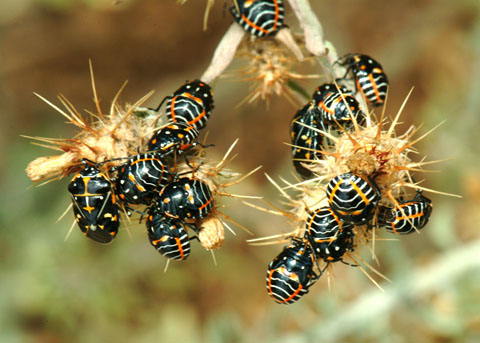 Upper Newport Bay, Newport Beach, Orange County, CA. 05/24/08. © Peter J. Bryant. |
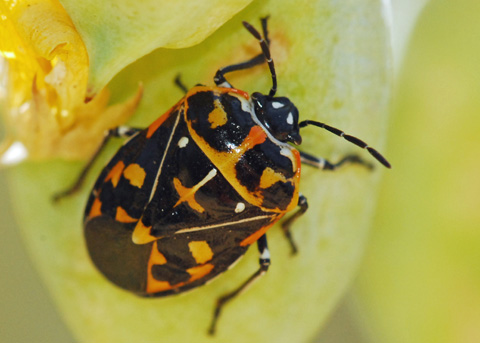 Thomas E. Riley Wilderness Park, Coto de Caza, Orange County, CA. 6-29-08. © Ron Hemberger |
Shipley Nature Center, Huntington Beach Central Park, Huntington Beach, CA. 10-30-08. © Ron Hemberger |
|
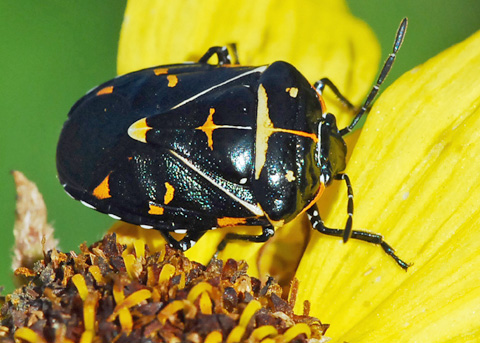 Shipley Nature Center, Huntington Central Park, Huntington Beach, CA. 12-30-08. © Ron Hemberger |
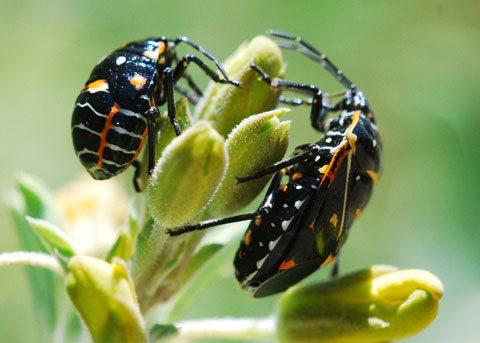 Nymph and adult. Thomas E. Riley Wilderness Park, Coto de Caza, Orange County, CA. 5-10-09. © Ron Hemberger |
Sources consulted:Arnett, Dr. Ross H., Jr. & Jacques, Dr. Richard L. (Eds.). (1981). Simon & Schuster’s Guide to Insects. New York, NY: Simon & Schuster, Inc. Hogue, Charles L. (1992). Insects of the Los Angeles Basin (2nd ed.). Los Angeles: Natural History Museum of Los Angeles County. Milne, Lorus & Milne, Margery. National Audubon Society: Field Guide to North American Insects & Spiders. New York: Chanticleer Press, Inc., 1980. Species Murgantia histrionica ; Harlequin Bug.; <http://www.bugguide.net>. © Peter J. Bryant. Contact for originals. Text © Britton Jacob-Schram. |
|





